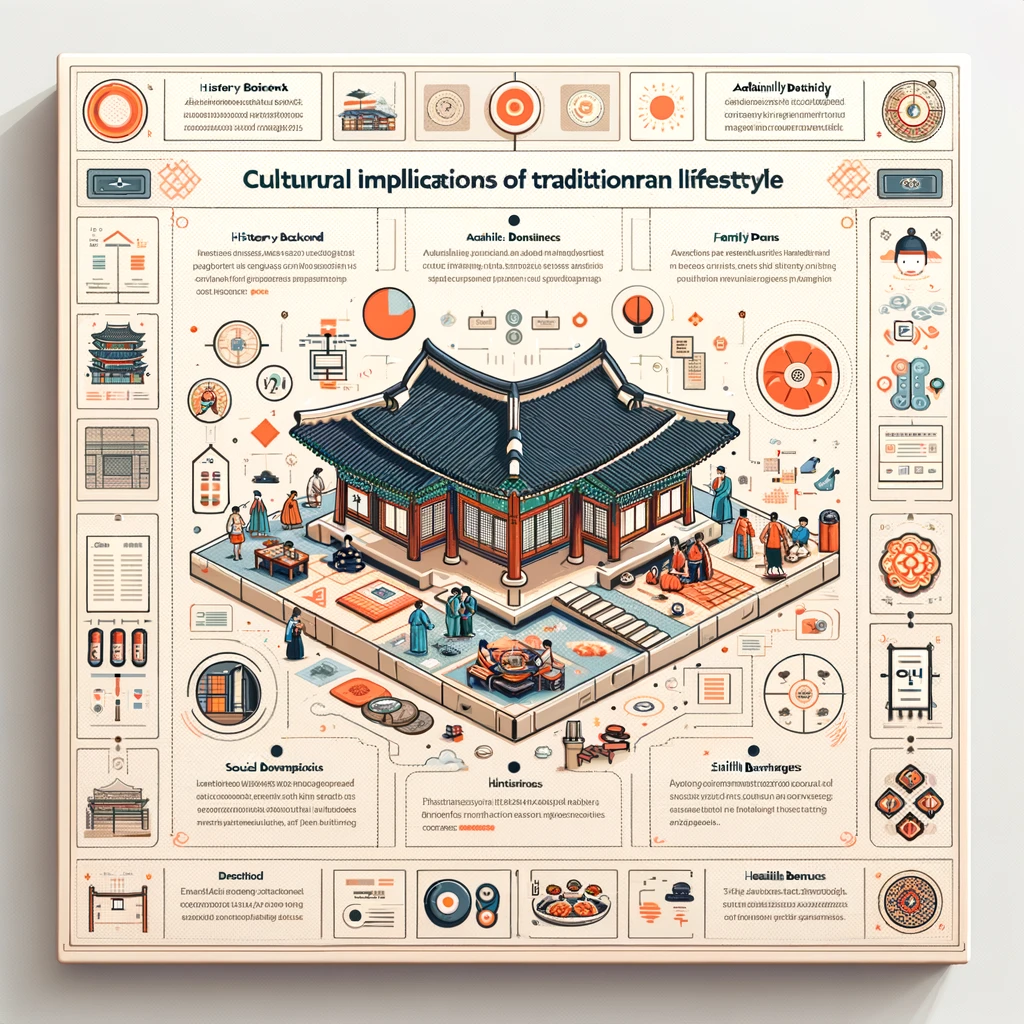목차
Cultural Implications of Ondol in Traditional Korean Lifestyle
Introduction
The traditional Korean ondol heating system has been more than just a source of warmth for centuries; it has shaped numerous aspects of Korean culture, from architectural designs to daily social practices and even the health beliefs of the Korean people. This detailed exploration delves into how ondol has influenced the traditional Korean lifestyle, revealing its deep cultural implications and the timeless connection between a society and its environmental adaptations.

Historical Background of Ondol
Ondol, meaning “warm stone,” dates back to the Proto-Three Kingdoms period of Korea, around the first century BCE. Originally a luxury for royals and the elite, ondol was eventually integrated into common people’s homes during the Goryeo Dynasty, becoming a standard feature in Korean architecture. This heating system utilizes direct heat transfer from wood-fired stoves to stone slabs under the house, effectively turning the floor into a large radiator.
Architectural Impact
Residential Design: Traditional Korean homes, or hanoks, are designed with ondol flooring in living and sleeping areas, which dictates much of the spatial arrangement and structural aesthetics. The need to accommodate ondol influenced the choice of materials and construction techniques, favoring stone and clay over wood where the heat circulates.
Furniture Minimalism: The warmth provided by ondol floors led to a unique style of minimalistic furniture. Traditional Korean interiors typically feature low furniture or none at all, as sitting and sleeping directly on the warm floor was preferable, especially during cold seasons.
Social and Family Dynamics
Family Gatherings: Ondol floors naturally became the center of family activities, particularly in winter. Families would gather on the warm floor for meals, conversations, and sleep, strengthening family bonds and reinforcing social cohesion.
Guest Hospitality: The warmest part of a house was often reserved for guests, reflecting the Korean value of hospitality. The seating arrangement around the warm floor facilitated social interactions and communal living.
Cultural Practices and Lifestyle
Eating Habits: The traditional sitting posture on the floor during meals is directly related to ondol. Low dining tables called sang were developed to accommodate the seated posture encouraged by the warm floors.
Clothing: The design of traditional Korean clothing, such as the hanbok, also accommodates the sitting posture on heated floors, being loose and comfortable, facilitating ease of movement and warmth retention.
Health and Wellbeing
Therapeutic Benefits: Koreans have long believed in the health benefits of ondol, particularly its therapeutic effects on joints and muscles. The gentle and steady heat was thought to improve circulation and respiratory conditions.
Winter Health Management: The design of ondol is particularly adept at creating a living environment that supports health during harsh winters, reducing the prevalence of cold-related illnesses.
Spiritual and Symbolic Meanings
Philosophical Harmony: Ondol reflects the traditional Korean philosophy of living in harmony with one’s environment. The system uses natural materials and principles to provide warmth, embodying the idea of a symbiotic relationship with nature.
Symbolic Warmth: The constant warmth from the floor symbolizes a stable and nurturing family environment, mirroring the warmth of human relationships and care within the household.
Modern Implications and Legacy
Despite the modernization of heating systems and architecture, the cultural legacy of ondol remains significant in contemporary Korea. Many modern Korean homes still incorporate elements of ondol, either in traditional or updated forms, and the cultural practices shaped by centuries of living with ondol continue to influence Korean lifestyle. Additionally, the principles of ondol are increasingly recognized in sustainable architecture globally, demonstrating the system’s relevance beyond its cultural origins.
Conclusion
The ondol heating system is a profound example of how technology can intertwine with daily life and cultural identity. It is a testament to the ingenuity of ancient Korean society and its ability to create a sustainable and culturally integrated living environment. As we explore the nuances of traditional lifestyles like those shaped by ondol, we gain insights into the potential for modern adaptations of ancient technologies in creating sustainable and culturally rich living environments.
Go Blog Home
